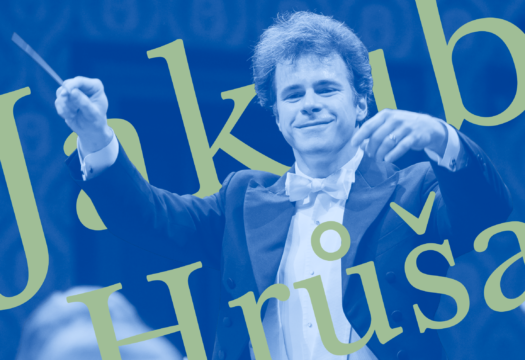The Czech violinist Jan Mráček was born in 1991 in Pilsen and began studying violin at the age of five with Magdaléna Micková. From 2003 he studied with Jiří Fišer, graduating with honors from the Prague Conservatory in 2013, and until recently at the University of Music and the Performing Arts in Vienna under the guidance of the Vienna Symphony concertmaster Jan Pospíchal.
As a teenager he enjoyed his first major successes, winning numerous competitions, participating in the master classes of Maestro Václav Hudeček – the beginning of a long and fruitful association. He won the Czech National Conservatory Competition in 2008, the Hradec International Competition with the Dvořák concerto and the Janáček Philharmonic Orchestra in 2009, was the youngest Laureate of the Prague Spring International Festival competition in 2010, and in 2011 he became the youngest soloist in the history of the Czech Radio Symphony Orchestra. In 2014 he was awarded first prize at Fritz Kreisler International Violin Competition at the Vienna Konzerthaus. When the victory of Jan Mráček was confirmed, there was thunderous applause from the audience and the jury. The jury president announced, “Jan is a worthy winner. He has fascinated us from the first round. Not only with his technical skills, but also with his charisma on stage.”
Jan Mráček has performed as a soloist with world’s orchestras, including the Royal Philharmonic Orchestra, St. Louis Symphony, Symphony of Florida, Tchaikovsky Symphony Orchestra, Kuopio Symphony Orchestra, Romanian Radio Symphony, Lappeenranta City Orchestra (Finland) as well as the Czech National Symphony Orchestra, Prague Symphony Orchestra (FOK), Janáček Philharmonic Orchestra and almost all Czech regional orchestras.
Jan Mráček had the honor of being invited by Maestro Jiří Bělohlávek to guest lead the Czech Philharmonic Orchestra in their three concert residency at Vienna’s Musikverein, and the European Youth Orchestra under Gianandrea Noseda and Xian Zhang on their 2015 summer tour. He has been a concertmaster of the Czech Philharmonic since 2018.
In 2008 he joined the Lobkowicz Piano Trio, which was awarded first prize and the audience prize at the International Johannes Brahms Competition in Pörtschach, Austria in 2014.
His recording of the Dvořák violin concerto and other works by this Czech composer under James Judd with the Czech National Symphony Orchestra was recently released on the Onyx label and has received excellent reviews.
Jan Mráček plays on a Carlo Fernando Landolfi violin, Milan 1758, generously loaned to him by Mr Peter Biddulph.


